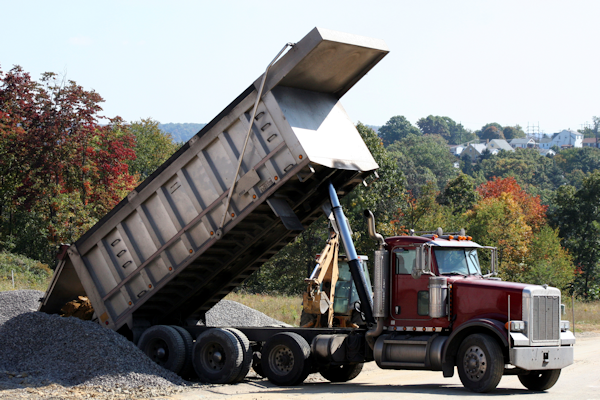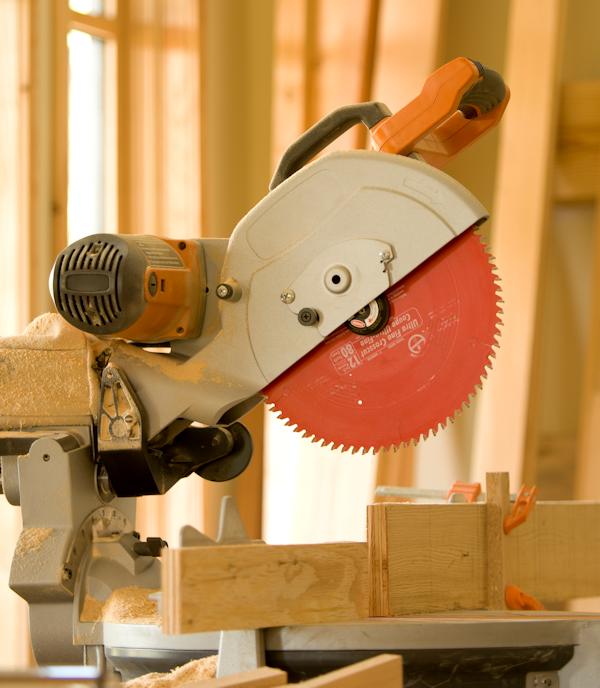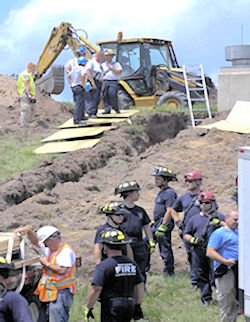What are Caught-In/Between Hazards?
Definition
According to OSHA, caught-in and caught-between injuries are defined as: Injuries resulting from a person being squeezed, caught, crushed, pinched, or compressed between two or more objects, or between parts of an object.
These events include getting caught or crushed in operating equipment, between other mashing objects, between a moving and stationary object, or between two or more moving objects.
The difference between a caught event and a struck event, can be confusing. The key factor in determining a caught event from a struck event is determining whether the worker initiated contact with an object or the object itself caused the injury. For example:
- When the injury occurs because workers place themselves such that they can be crushed between objects, the injury is due to a caught event.
- When the impact of the object creates the injury, it is a struck event. A simple example is when a falling object strikes a worker.
The following are examples that can be classified as caught events:
- Caught-in: cave-ins (trench collapse)
- Caught-in: being pulled into or caught in machinery and equipment (this includes strangulation as the result of clothing caught in running machinery and equipment)
- Caught-between: being compressed or crushed between rolling, sliding, or shifting objects such as rotating cranes and stationary object
- Caught-between: being crushed between a truck frame and a hydraulic bed that is lowering
Caught-in between hazards in construction cause accidents such as the following:
- A worker was ripping a 6-inch piece of wood on an unguarded compound miter saw. His left thumb was caught in the saw and amputated.
- An employee was performing diagnostic work on a water truck at a construction site. The worker crawled under the operating truck. The employee's work shirt collar and coveralls became caught on a projecting set screw on the rotating pump shaft. The set screw pulled him into the pump shaft. The employee died en-route to the hospital.
- A worker climbed onto an I-beam to clean muck off the tail pulley of a conveyor belt attached to a separator. The conveyor system was energized and in operation. The employee reached between the feed and return of the belt in front of the tail pulley with his hand to brush the muck off the belt. He was caught by the moving belt, and his hand and arm were pulled into a pinch point in the tail pulley. The employee's arm was fractured.
- Two workers were in an unprotected trench reconnecting drainpipes when, without warning, the walls collapsed around them. One worker was able to escape uninjured, but the second worker was not. There was no protection against a side wall collapse and no exit in a 62-foot long trench.
- An employee and a co-worker were working in a 9-foot deep excavation installing water pipes when the south side of the excavation caved in on the employee and buried him. The employee was killed.
- Two laborers were framing out footing for foundation walls in an excavation 100-feet long by 45-foot wide by 10-foot deep. The adjacent property along the north wall of the excavation consisted of seven garages, with a 10-foot high cinderblock wall. The cinderblock wall was undermined approximately 2 feet and was not supported. The wall collapsed, crushing the laborers. One was killed, and the other was taken to the hospital for back and shoulder injuries.
- A worker was operating a road grader when the engine died, and the vehicle rolled towards a small ravine. The employee jumped off the grader but was pulled under the grader as it overturned. He was killed when he was pinned and crushed underneath the tires.
Knowledge Check Choose the best answer for the question.
1-1. Which event below is a "caught-in" accident?
You forgot to answer the question!



